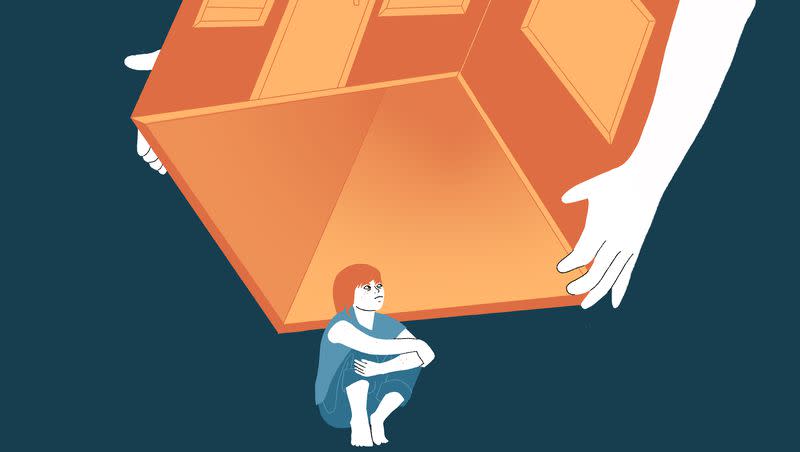Perspective: How the Children’s Bureau lost its way

“It’s definitely very empowering when you get involved. Like anytime I finish a pair of beaded earrings. I feel like, wow, I just did that.”
This message of empowerment through beading was tweeted out by the federal Administration for Children and Families recently. It’s one of a series of head-scratching messages offered by the agency that is supposedly tasked with reducing child maltreatment in this country but seems increasingly distracted by other goals.
The Administration for Children and Families began in 1912 as the Children’s Bureau, and it seemed effective then. The early part of the 20th century saw a number of progressive reforms around the treatment of children. These included restrictions on child labor, mandatory school attendance and concern about infant mortality and children’s health. But it took longer for these matters to become the concern of the federal government.
According to one article in the Encyclopedia of Chicago:
On March 31, 1905, Chicagoans Jane Addams and Mary McDowell joined Lillian D. Wald, founder of New York’s Henry Street Settlement, and Edward T. Devine, editor of the journal Charities, for a meeting at the White House with President Theodore Roosevelt. The group urged Roosevelt to establish a federal bureau to investigate and report on the nation’s youngest citizens. It took seven more years of lobbying, but President William Howard Taft signed the U.S. Children’s Bureau into law on April 9, 1912, and named as the agency’s first chief another Hull House resident, Julia C. Lathrop.
The bureau’s mission was to “reduce infant mortality; eradicate child labor; document the dire conditions faced by families during the Great Depression; (and) assist in the recovery after World War II,” according to the Children’s Bureau website.
The kind of difficulties that plagued children in the early part of the 20th century gradually subsided, as a result of economic growth, laws around childhood labor and education and a social safety net that provided support to widows with dependent children.
Over time, the Children’s Bureau was subsumed by the Administration for Children and Families, which was a part of the Department of Health and Human Services. Many new programs were added, but the Children’s Bureau was arguably the most important because it continued to help the most vulnerable. Even as most American children were experiencing an improvement in health and well-being, there remained a group of children who were still experiencing terrible hardships. They were kids who had been abused and neglected. And the Children’s Bureau began to administer “programming to support the nation’s child protection, foster care, guardianship and adoption programs.” State governments are in charge of child welfare agencies but the federal government helps to fund them as well as collect data and share best practices on child welfare.
But in recent years, the Children’s Bureau’s child welfare mission has taken a back seat. The most recent report from ACF, “Child Maltreatment 2022,” an annual compendium of statistics on child abuse and neglect, was released last week. The report contained a number of disturbing developments. Most importantly, the number of child maltreatment fatalities continued to rise, as it has every year since 2017. It has grown by more than 17% in that time.
Related
Yet instead of focusing on child protection and what can be done to combat abuse and neglect, the press release accompanying the report notes that the goal of ACF is to focus “on getting families what they need, when they need it, long before the involvement of child welfare. This could include increasing access to concrete and economic supports and increasing access to community-based behavioral health services and supports designed to support whole families.”
There is nothing wrong with providing economic supports to families, but the agency seems to be losing focus on child protection. This has been a bipartisan development.
David Kelly, a key official at the Children’s Bureau in the Trump administration, argued, “We need to let go of the system that was designed to rescue children, and construct a system that’s designed to promote health and well-being for all families.”
Kelly and another official, Jerry Milner, have gone on to found the Family Justice Group, an advocacy organization that brings “together federal, state, and local agencies and stakeholders to align resources to create the conditions for families to thrive.” They note that this is the work they began at the Children’s Bureau.
The problem with this mission is, of course, that it’s not the job of the federal government to promote family well-being. Indeed, doing so would mean engaging in the kind of intrusion objected to by people who see child welfare agencies as overreaching. Second, it’s not an achievable goal. What would it mean to promote family well-being on a nationwide scale? And finally, this kind of mission creep means that the focus is diverted from helping children in need of protection.
In arguing for the creation of the Children’s Bureau in 1903, Wald asked, “If the government can have a department to look after the Nation’s farm crop, why can’t it have a bureau to look after the Nation’s child crop?” It seems like a lovely sentiment, but the nation’s child crop is considerably larger than it was back then and the percentage of children who truly need the intervention of child welfare agencies is considerably smaller. Their problems cannot be ignored.
Naomi Schaefer Riley is a senior fellow at the American Enterprise Institute, a Deseret News contributor and the author of “No Way to Treat a Child: How the Foster Care System, Family Courts, and Racial Activists Are Wrecking Young Lives,” among other books.
.

